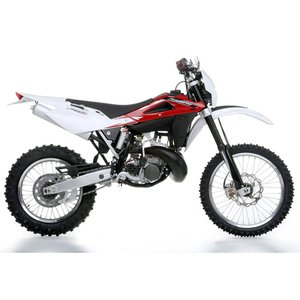Husqvarna WR 250 (1980–2012): A Two-Stroke Legacy Forged in the Dirt
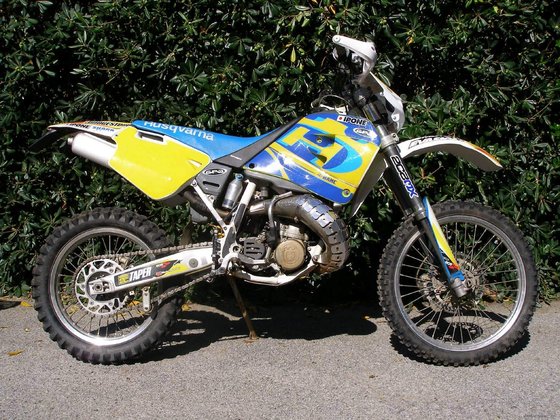
Introduction
For over three decades, the Husqvarna WR 250 stood as a beacon of raw, unapologetic two-stroke performance in the enduro world. From its early days as a spartan dirt machine to its evolution into a refined off-road weapon, this Swedish-born motorcycle earned a cult following for its ability to dominate technical terrain with a blend of brute force and precision. Throwing a leg over a WR 250 feels like plugging into a primal energy source—a reminder of why riders still crave the adrenaline of a lightweight, high-revving two-stroke. Let’s dissect what made this generation a legend and why it remains relevant for riders who value simplicity and visceral performance.
Engine Performance: The Heart of a Hill-Climbing Beast
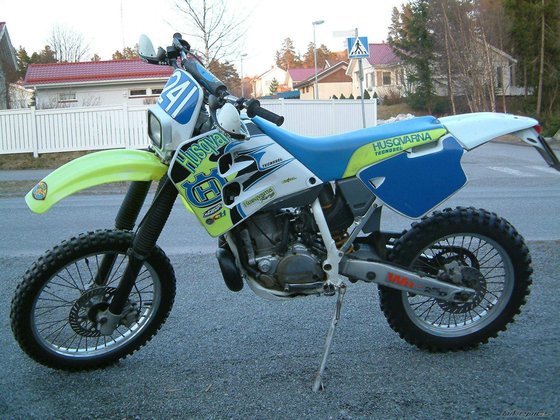
At the core of the WR 250’s identity lies its liquid-cooled, single-cylinder two-stroke engine. With a displacement of 249.3 cc (15.21 cubic inches) and a bore/stroke of 66.4 x 72.0 mm (2.6 x 2.8 inches), this powerplant is tuned for torque rather than outright peak horsepower. The Mikuni TMX 38mm carburetor delivers a crisp throttle response, though jetting adjustments are often needed to optimize for local conditions—a small price to pay for the analog satisfaction of dialing in your own fuel mixture.
What sets the WR apart is its HTS (Husqvarna Torque System) power valve, which smooths out the notorious “hit” of traditional two-strokes. The result? A tractable low-end grunt that lets you crawl up root-infested climbs at near-idle RPMs, followed by a linear surge of power as the revs climb. On tight single-track trails, this translates to fewer stalls and less clutch abuse. One memorable ride through a rocky riverbed highlighted its tractor-like demeanor: the WR chugged over slippery boulders with minimal throttle input, while four-strokes in our group required frantic fanning to avoid flameouts.
The 5-speed gearbox (or 6-speed in later models) is spaced for versatility, with a stump-pulling first gear and a 90 km/h (56 mph) cruising capability on fire roads. The cable-operated clutch lacks the buttery feel of KTM’s hydraulic units, but its progressive engagement makes it forgiving for beginners.
Suspension and Handling: Precision Meets Durability
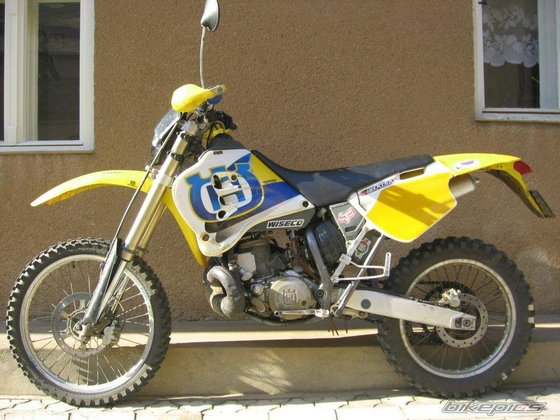
Husqvarna’s chassis philosophy leans toward stability over ultra-flickable agility. The steel single-tube cradle frame paired with an aluminum subframe strikes a balance between rigidity and weight savings, yielding a dry weight of 103.5–107 kg (228–236 lbs) depending on the model year. Combined with a 1,450–1,485 mm (57.1–58.5-inch) wheelbase, the WR feels planted at speed but still nimble enough to pivot through switchbacks.
Suspension setups evolved over the years, but the golden era models (2000s) featured Marzocchi 48mm USD forks and a Sachs rear shock with adjustable preload, compression, and rebound damping. Out of the crate, the WR’s suspension is firmer than competitors like the KTM 250 EXC—a boon for aggressive riders attacking whoops at pace. Smaller bumps are absorbed with a muted “thud,” while big hits trigger a controlled stroke that avoids harsh bottoming. During a test ride on a motocross track, the WR’s front end stayed composed under hard braking into corners, and the rear tracked predictably through rutted berms.
Design and Ergonomics: Function Over Frills
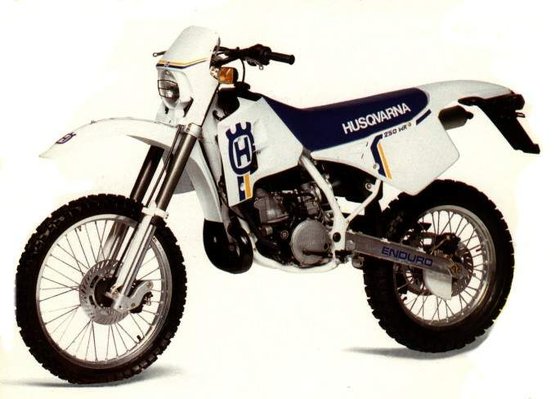
Husqvarna’s design language for the WR 250 prioritized utility. The 11.2L (2.9-gallon) fuel tank sits low for a centered weight distribution, and the 890–985 mm (35–38.8-inch) seat height accommodates shorter riders without sacrificing ground clearance. The quick-release seat mechanism is a godsend for trailside air filter maintenance—a feature KTM riders eyed enviously in the pre-airbox-tool era.
Aesthetics evolved from the 1980s’ boxy plastic shrouds to the 2000s’ sleek red/white livery. The much-maligned black tank (prone to overheating fuel in summer) gave way to translucent designs in later years. While the WR lacks modern luxuries like electric start or fuel injection, its simplicity is a virtue: fewer components mean fewer failure points when you’re 50 km deep into a backcountry loop.
Competition: How the WR 250 Stacks Up
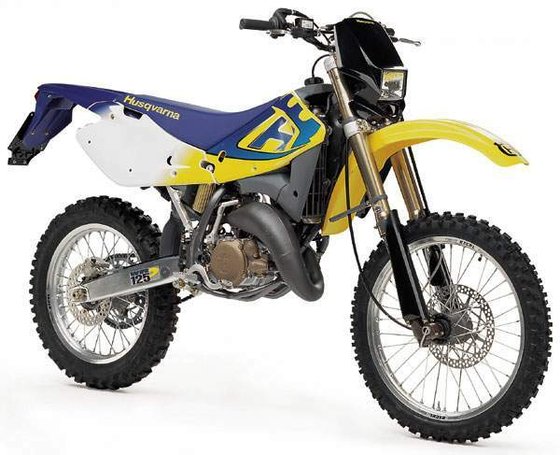
KTM 250 EXC
The WR’s archrival shares its two-stroke DNA but diverges in personality. KTM’s hydraulic clutch and slightly plusher suspension make it friendlier for technical trail riding, but the Husky counters with a stronger mid-range pull and superior stability at speed. Weight is nearly identical, but the WR’s steel frame absorbs vibration better on long hauls.
Yamaha WR250F
Yamaha’s four-stroke entrant trades the Husky’s snap for broader torque and easier maintenance (no premixing!). However, the WR250F’s 116 kg (256 lb) wet weight becomes glaring in tight terrain, and its engine can’t match the two-stroke’s thrill factor.
Honda CRF250X
Honda’s trail-focused four-stroke is smoother and quieter, making it a better fit for noise-sensitive riding areas. Yet the CRF’s 29 hp output feels muted compared to the Husky’s explosive power band, and its suspension lacks adjustability for heavier riders.
Verdict: The WR 250 shines for riders who prioritize lightweight agility and raw power over refinement. It’s a purist’s choice in an era of increasingly complex four-strokes.
Maintenance: Keeping the Legend Alive
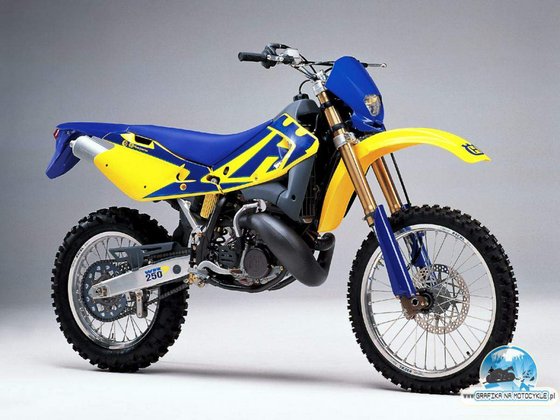
Owning a WR 250 means embracing its mechanical personality. Here’s how to keep it thriving:
- Air Filter Care: Frequent cleaning is critical—expect to service the foam filter every 2–3 rides in dusty conditions. Upgrade to a Twin Air filter (available at MOTOPARTS.store) for improved airflow and durability.
- Premix Wisdom: Stick to a 50:1 fuel/oil ratio with high-quality synthetic oils like Motul 800 Off-Road.
- Suspension Tuning: Rebuild forks and shock every 100 hours. Consider MOTOPARTS.store’s SKF seal kits to reduce stiction.
- Brake Upgrades: Swap stock pads for sintered EBC units for better bite in mud and sand.
- Clutch Longevity: Install a Rekluse Torque Drive kit (available in-store) to reduce lever effort and extend cable life.
Conclusion: A Timeless Off-Road Icon
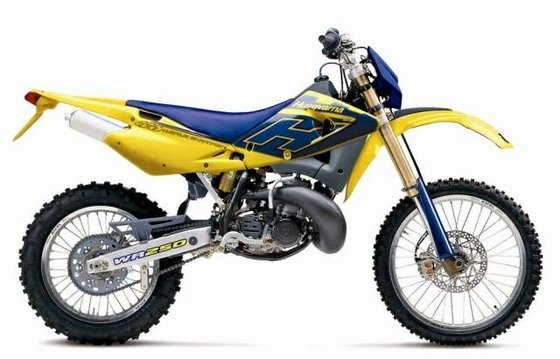
The Husqvarna WR 250 isn’t just a motorcycle—it’s a statement. For riders who value mechanical connection and unfiltered performance, this two-stroke remains a benchmark. Whether you’re resurrecting an ’80s gem or fine-tuning a 2012 model, MOTOPARTS.store has the expertise and components to keep your WR conquering trails for decades to come. In an age of emissions regulations and electronic aids, the WR 250 stands as a defiant reminder: sometimes, less really is more.
Ready to unleash your WR’s potential? Explore our curated selection of performance parts, tools, and accessories at MOTOPARTS.store.
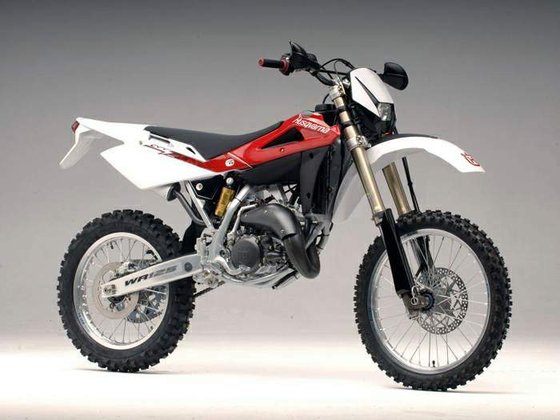




Specifications sheet
| Engine | |
|---|---|
| Stroke: | Two-stroke |
| Max power: | 12 kW | 16.0 hp |
| Fuel system: | Mikuni TMX38 Carburettor |
| Lubrication: | Fuel/oil premix 50:1 |
| Max power @: | 5500 rpm |
| Displacement: | 249 ccm |
| Configuration: | Single |
| Compression ratio: | 12.3:1 |
| Number of cylinders: | 1 |
| Dimensions | |
|---|---|
| Wheelbase: | 1485 mm (58.5 in) |
| Dry weight: | 108 |
| Seat height: | 985 mm (38.8 in) |
| Ground clearance: | 345 mm (13.6 in) |
| Fuel tank capacity: | 11.2 L (2.96 US gal) |
| Drivetrain | |
|---|---|
| Final drive: | chain |
| Chain length: | 118 |
| Transmission: | 5-speed |
| Rear sprocket: | 47 |
| Front sprocket: | 15 |
| Maintenance | |
|---|---|
| Rear tire: | 140/80-18 |
| Front tire: | 90/90-21 |
| Brake fluid: | DOT 4 |
| Spark plugs: | NGK CR8E/CR8EIX |
| Spark plug gap: | 0.8 |
| Coolant capacity: | 1.9 |
| Forks oil capacity: | 1.2 |
| Transmission oil type: | 10W-40 |
| Transmission oil capacity: | 0.8 |
| Additional Notes | |
|---|---|
| Key features: | HTS Power Valve for enhanced torque, liquid cooling, kick start |
| Off-road focus: | High ground clearance, aggressive suspension tuning, lightweight chromoly frame |
| Chassis and Suspension | |
|---|---|
| Rake: | 27.0° |
| Frame: | Chromoly steel single-tube cradle with aluminum subframe |
| Trail: | 100 mm (3.9 in) |
| Rear brakes: | Single 220mm disc |
| Front brakes: | Single 260mm disc |
| Rear suspension: | Sachs monoshock with adjustable preload, compression, and rebound |
| Front suspension: | Kayaba 48mm USD fork, fully adjustable compression/rebound |
| Rear wheel travel: | 320 mm (12.6 in) |
| Front wheel travel: | 300 mm (11.8 in) |



